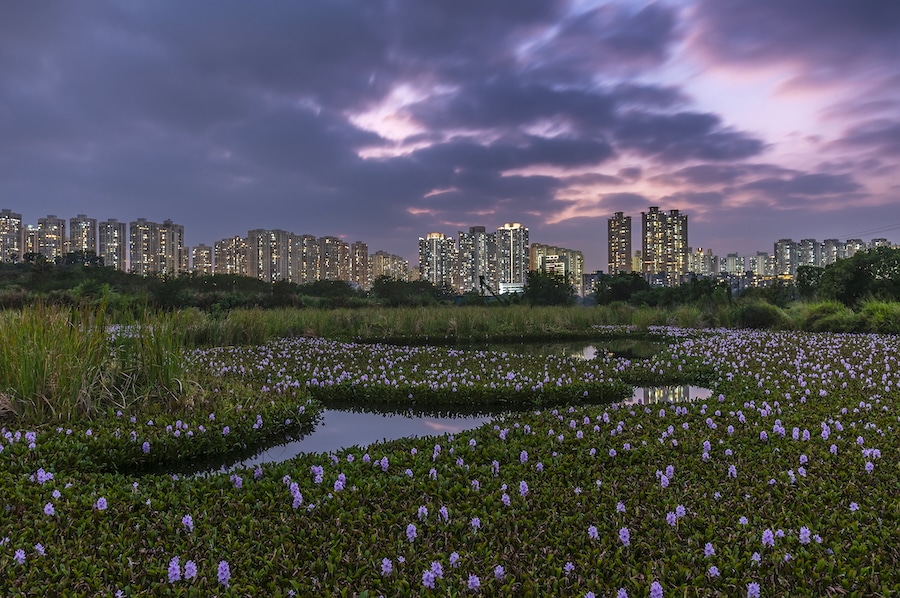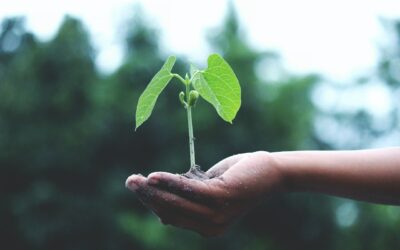This post was originally published on Eco Watch
In a recent study, scientists have found that the species Eichhornia crassipes, also known as the common water hyacinth, has strong potential as a remediator for microplastics in the environment.
In the study, published in the journal Environmental Science and Ecotechnology, researchers collected water hyacinths from a river in Shanghai, China and relocated the plants for continued growth in a greenhouse with controlled nutrients, light and temperatures. Then, to test for the ability to take up microplastics, researchers placed plants of the same size and from the same mother plant, with two of these plants per one glass culture bottle.
From there, particles of polystyrene (PS) were added to the nutrient solution in the bottles and observed for a 14-day period, with the liquid in the bottles switched out every 7 days.
Based on the results, the water hyacinths’ growth was not impacted by the presence of microplastics, and microplastics only made it to the stem of the plants, not the leaves. The root system even adsorbed the microplastics over the course of the research.
Within 48 hours, the extensive water hyacinth roots removed 55.3% of the microplastics from the nutrient solution. After five days, the roots removed 62.8% of the 0.5-micrometer particles, 78.3% of the 1-micrometer particles and 76.8% of the 2 micrometer particles.
According to the authors, the massive root caps on water hyacinth make them particularly suitable for removing water pollutants, like microplastics, with a total surface area reaching more than 150,000 square millimeters.
The Global Invasive Species Database lists the water hyacinth as “one of the worst aquatic weeds in the world” because it grows so quickly. The plant’s quick growth and large root system can block light and oxygen from reaching native plants and fish in waterways, leading to a decline in biodiversity.
But, as a 2019 study revealed, these invasive plants can also provide some benefits, acting as both bioindicators of pollution levels in an environment and as filters for removing pollution, like heavy metals, from waterways.
Because the latest study revealed that the microplastics do not inhibit growth or reach past the stem of the plant, the invasive water hyacinth could also be used for other purposes after filtering water.
As Mongabay News reported, the uncontaminated plant leaves could be used for biogas generation or livestock feed after cleaning waterways. According to Greeneration Foundation, the high nutrient content found in water hyacinth, in part from filtering runoff like nitrogen and phosphorus out of waterways, also means it could be composted and used for crop fertilization.
“Aquatic ecosystems often become contaminated with multiple hazardous substances, including MPs, heavy metals, and organic pollutants,” the study authors concluded. “Water hyacinth has shown remarkable tolerance and removal capabilities in relation to these pollutants, highlighting its potential application in managing complexly polluted water bodies.”
The post Water Hyacinths Show Promise for Microplastics Removal, Despite Being an Invasive Species appeared first on EcoWatch.





0 Comments